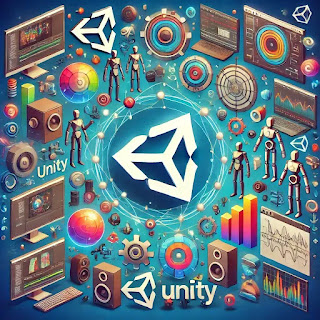Animation plays a pivotal role in creating immersive and engaging experiences
in game development. For developers using Unity, a leading game engine,
integrating animation effectively is crucial. Here, we outline the best practices
for integrating animation in Unity game development, ensuring that your game
stands out with fluid and captivating movements. This article also incorporates
key insights and strategies relevant for any Unity game development company
or those offering 3D animation services.
Understanding the Basics
Mastering Unity’s Animation Tools: Unity provides a comprehensive set of
tools for animation, including the Animator Controller, Animation Window, and
Timeline. Familiarize yourself with these tools to effectively create and manage
animations. The Animator Controller allows you to create complex animation
states and transitions, while the Animation Window lets you fine-tune keyframes
and motion.
Utilizing Mecanim: Unity’s Mecanim animation system is a powerful tool for
character animation. It allows for the creation of sophisticated animation rigs
and blends different animations seamlessly. Mecanim’s retargeting feature
also enables you to reuse animations across different characters, saving time
and resources.
Planning and Pre-production
Storyboarding and Pre-visualization: Before diving into animation, plan your
scenes meticulously. Storyboarding helps visualize the flow of animations and
ensures consistency in your game’s narrative. Pre-visualization techniques,
such as animatics, can provide a rough version of your final animation, helping
you spot potential issues early on.
Detailed Rigging: A good rig is the foundation of smooth animations. Ensure
your characters are rigged with detailed and flexible skeletons. For 3D animation
services, it's crucial to have control rigs that allow animators to create natural
and expressive movements. Use Inverse Kinematics (IK) and Forward Kinematics
(FK) appropriately to control the limbs of your characters.
Implementation and Techniques
Layered Animation: Unity allows you to layer animations, enabling complex
movements to be built from simpler ones. For instance, a character’s running
animation can be combined with an upper body shooting animation. This
technique adds depth to your animations without requiring extensive separate
animations based on parameters such as speed or direction. They are particularly
useful for creating fluid character movements like walking, running, and jumping.
Adjust the blend parameters to achieve realistic transitions.
Root Motion: Use Root Motion to drive your character’s position from the
animation itself. This ensures that the character’s movement in the game
world matches the animation, providing a more realistic interaction with the
environment. It’s especially useful for complex movements like climbing or
fighting.
Animation Events: Unity’s Animation Events allow you to trigger functions at
specific points in your animations. This can synchronize sound effects, particle
effects, or other gameplay elements with the animation. For example, triggering
a footstep sound precisely when the character’s foot hits the ground.
Optimization and Performance
Optimize for Performance: Animation can be performance-intensive, especially
on mobile devices. Optimize your animations by reducing the number of bones,
simplifying rig structures, and using Level of Detail (LOD) for distant characters.
Unity’s Profiler tool can help identify performance bottlenecks.
Reuse and Modularize: Reusing animations across different characters and
scenes can significantly reduce development time and resources. Create a
library of reusable animations and modularize your animation assets.
Testing and Iteration: Constantly test your animations in the game environment.
Playtesting helps identify issues like clipping, unnatural movements, or
synchronization problems. Iterative testing and refining ensure that the final
animations are polished and contribute to the overall game experience.
Collaboration and Workflow
Effective Collaboration: Animation often requires collaboration between different
departments, such as design, programming, and art. Use version control systems
like Git to manage changes and collaborate effectively. Clear communication
and documentation are vital to ensure everyone is on the same page.
Integration with Other Systems: Integrate animations seamlessly with other
game systems like physics and AI. Ensure that animations respond correctly
to game events and player inputs. This creates a cohesive and immersive
gameplay experience.
Conclusion
Integrating animation in Unity game development requires a combination of
technical knowledge, artistic skills, and meticulous planning. By mastering
Unity’s tools, planning effectively, optimizing performance, and fostering
collaboration, you can create animations that significantly enhance your game.
For any Unity game development company or those offering 3D animation
services, following these best practices ensures the delivery of high-quality,
engaging, and visually appealing games.
Whether you are a seasoned developer or a newcomer, these strategies will
help you leverage the full potential of animation in Unity, creating memorable
gaming experiences that captivate players and set your games apart in the
competitive market.

.jpg)

.jpg)
No comments:
Post a Comment